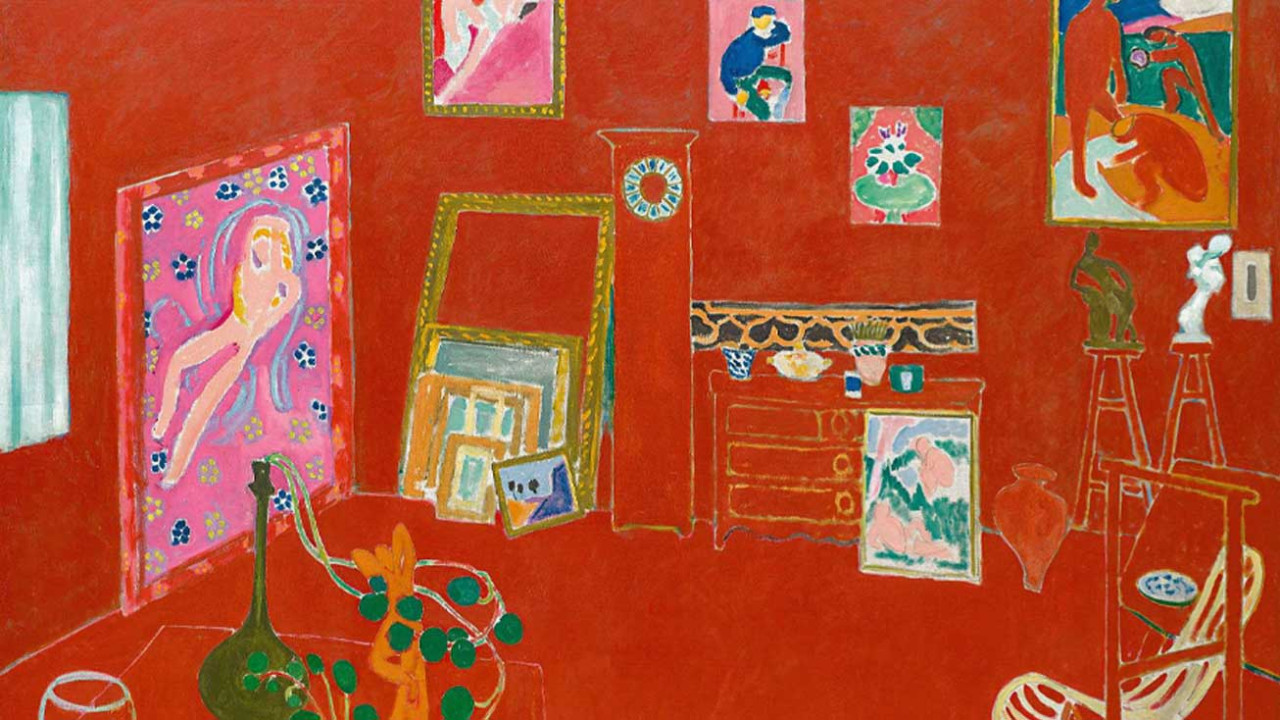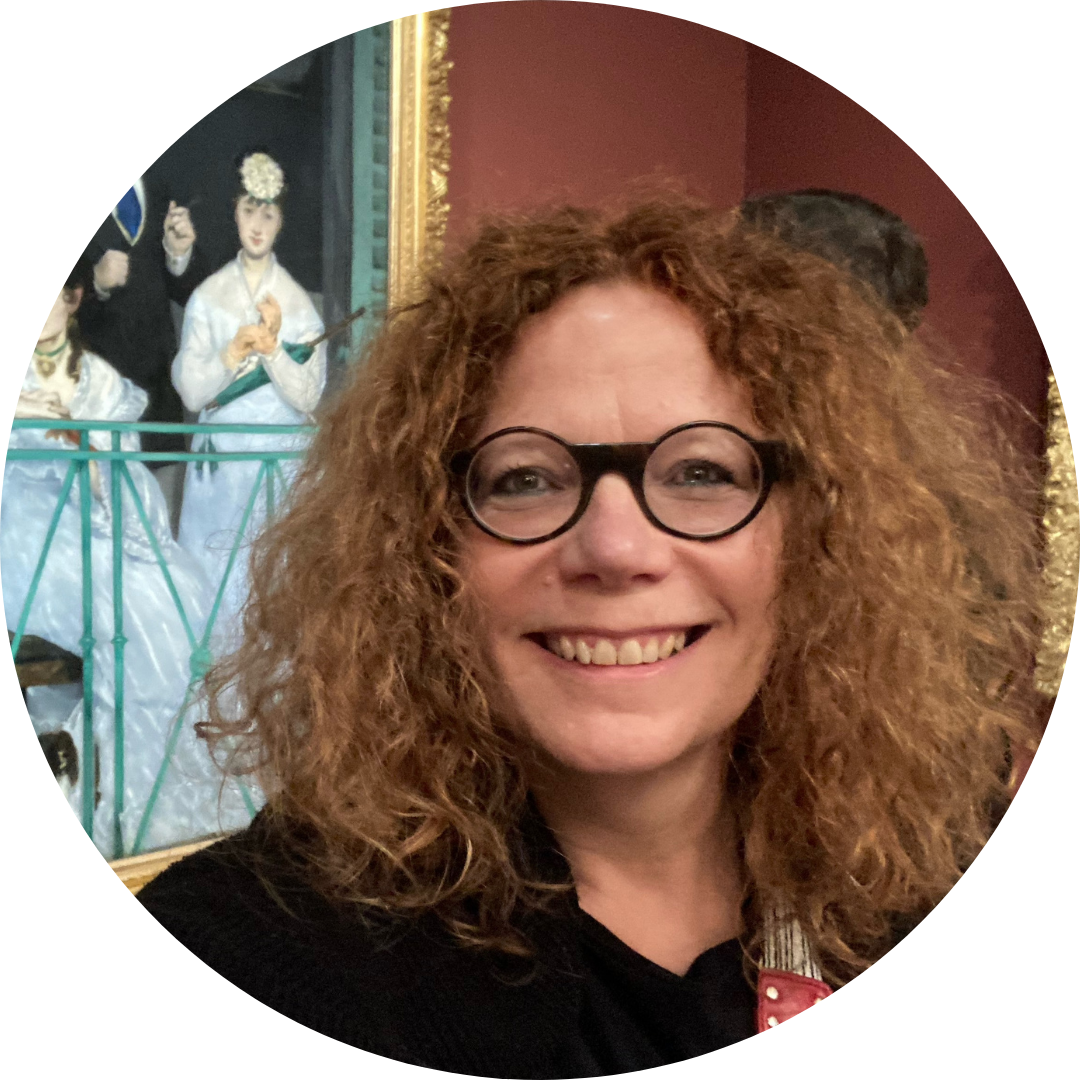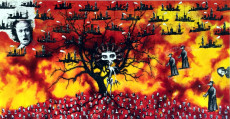
Rothko makes you dizzy at 46 cm from his paintings

About the "Mark Rothko" exhibition at the Fondation Louis Vuitton, Paris, until 2 April 2024.
If I had to defend a text written by a human sensibility against one written by an artificial intelligence (although I would have to be asked), I think I would take the example of painting. The emotion of the viewer will never be the same when faced with a reproduction of a work of art, no matter how polished, as when faced with the original. It has to be: a machine has "frozen" it. Its soul has gone. It may still seduce, but it will never overwhelm.
I can't believe that crowds flock to museums just to have something to talk about at trendy parties. There are bound to be a great many individuals among them who 'feel' the intrinsic life of painting in the depths of their being. Its vibration. Otherwise, they'd be looking at exhibition catalogues and not queuing for three hours...
To refine my point, and again in the event that I am asked for my opinion, I would talk about Mark Rothko. The ten pages of Connaissance des arts magazine devoted this month to the major exhibition at the Fondation Louis Vuitton in Paris may be magnificently illustrated with some of the iconic paintings by the Russian-born American painter, but anyone who has never stood in front of the originals is likely to wonder why these rectangles of colour are the subject of so much ink... "Another trick by the modern art market", one might say. Another trick of the modern art market", one might say, "Pfff... I don't think so! Pfff... I can do the same to you", said another, "it's like contemporary art: a sham, I tell you! Yes, I can hear them as if I were there. And I want to scream: GO AND SEE THESE PAINTINGS FOR REAL! Stand 46 cm in front of them... He advised it. Look... You're going to take off...
A Rothko retrospective has not been held in Paris for twenty-five years... For this exceptional occasion, the world's greatest museums have parted with their paintings so that visitors to the Fondation Louis Vuitton can admire 115 of them until 2 April 2024. A record number. Of course, this exhibition is not to be missed! Although, to be honest, we hardly dare comment on it, given that the artist himself was so disgusted by the speculations of the art market... and the art critics. So much so that he finally committed suicide in the face of illness, despite the fact that his works of art had been selling so well since he had exhibited at Peggy Guggenheim's art gallery... that he could even afford to reimburse his sponsors when, in the end, the place where they were to be exhibited seemed inappropriate. An artist, you say. Not an art dealer. I wonder what he would think if he knew that his Orange, Red, Yellow from 1961 sold for $86m in 2012 at Christie's...
If abstraction is opposed to lived reality, then Rothko's works of art are not abstract. Many years ago, I was lucky enough to visit the Tate Modern in London. I was too eager to see everything, I was going too fast. At one point I had to turn back, suddenly realising that I'd lost my companion. I found him sitting in the Rothko Room. He was dumbfounded. He had tears in his eyes. He couldn't go any further. I approached him, without saying a word. I took my turn to observe attentively. And I understood. Those monumental canvases I'd walked past too quickly had so much to tell! Not their manufacturing secrets, that's for sure: Mark Rothko left no 'recipe' for the mixtures of pigments that make his works of art so eloquent. But their materiality is such that they whisper to the ear. That they hypnotise. To the point of vertigo.
Well, the title of Valérie Bougault's article in the November issue of Connaissance des arts is "Mark Rothko, le peintre du vertige" (Mark Rothko, the painter of vertigo)... And the headline begs the question: "Famous for his huge, brightly coloured canvases, Mark Rothko (1903-1970) never thought of himself as a colourist or an abstract painter. What is this work, at once serene and violent, that plunges some viewers into a dizzying, trance-like emotion? Personally, I'd say it's the work of an artist who has thought his art through and lived it in his gut. Who gave it the power of life. To the point where he had to stop painting during the Second World War, such was the shock to this Jewish and Russian exile who had arrived in the United States at the age of 9. He could no longer depict human beings in his paintings. He wrote a book. Then he slowly returned to painting. But the alchemist artist then got rid of figuration.
The young Marcus Rothkowitz, the youngest of four children born in 1903 in Dvinsk, then a Russian town now called Daugavpils in Latvia, probably never imagined that he would one day become the illustrious Mark Rothko, the name he chose for himself in 1938 when he obtained American nationality. Especially as, at the age of 17, he was studying humanities at Yale University. "Philosophy, literature, theatre (he was an actor for a time), music - no area of culture was foreign to him. It was almost by chance that, in 1923, he was drawn to painting when a friend arranged for him to meet at the Art Students League in New York", writes the journalist from Connaissance des arts.
It has to be said that the student had to flee Yale because of the persecution of the Jews... He ended up doing odd jobs in New York. He studied painting with Max Weber and Arshile Gorky. He became interested in Cézanne, Rembrandt, Fra Angelico...". His figurative painting of the 1930s is astonishing today: anorexic silhouettes similar to Giacometti's sculptures, moving through urban scenes with linear architectural structures, the subterranean worlds of the underground severely framed - the Subway Paintings - a whole existentialist universe, almost a theatrical set. Paintings on paper, watercolour or gouache were an important part of his work, and his first solo exhibition, in Portland in 1933, was devoted to them," writes Valérie Bougault.
From 1938 onwards, Mark Rothko embarked on a phase of experimentation and joined the aspirations of a new generation of New York artists, subsequently grouped together under the name of the New York School. With his painter friend Adolph Gottlieb, he wrote a letter to the art critic of the New York Times: "1. For us, art is an adventure into an unknown world, to be explored only by those willing to take the risk. 2. This world of the imagination has yet to be conquered and stands in violent opposition to common sense." Opposing common sense... I don't know about you, but it speaks to me so much...

Henri Matisse, L'Atelier rouge, 1911, oil on canvas, 181 x 219 cm, New York ©Museum of Modern Art
In short, "the years 1946 to 1949 were those of the slide towards abstraction", wrote the Connaissance des arts journalist. And what a miracle: in 1949, Mark Rothko fell head over heels in front of Henri Matisse's Le Grand Atelier rouge, which entered MoMA's collections that year. It wasn't the objects depicted on the canvas that interested him. It was the spaces that were red. Empty and inhabited at the same time. He remembered the rectangular composition and, above all, the use of this colour. But also its vibration and its incredible power of expression. He soon began to work in large, luminous flat areas of colour, organised in bands or invading the entire pictorial surface. From then on, Mark Rothko was considered to be one of the masters of abstract expressionism and turned to monochrome.
 Article written by Valibri en Roulotte
Article written by Valibri en Roulotte





































































